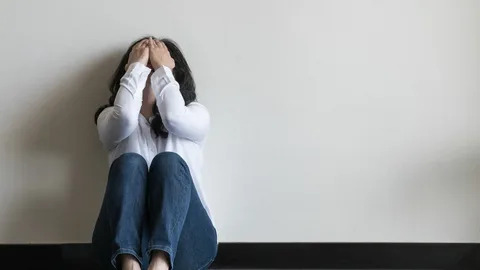Anxiety might have some mild symptoms that are simple to miss. Red flags include excessive fear of failing, perfectionism, and frequent unexplained irritability. In addition to avoiding social interactions, anxious people may find it difficult to unwind in even quiet settings. Understanding and treating anxiety disorders require an awareness of these subtle indicators.
Anxiety Disorders: What Are They?
A variety of conditions that cause considerable anxiety and fear responses are included in the category of anxiety disorders. Among them are:
Generalized Anxiety Disorder (GAD):
This condition is characterized by excessive and ongoing anxiety over a variety of life’s aspects, including relationships, finances, and health, frequently without a clear reason.
Recurrent panic attacks, which are abrupt bursts of extreme terror or discomfort with accompanying symptoms including dizziness, palpitations, and heart palpitations, are the hallmark of panic disorder.
Social anxiety disorder is characterized by a severe fear of social circumstances and the possibility of shame or criticism, which makes people avoid social encounters.
Specific phobias are unreasonable anxieties associated with particular things or circumstances, including flying, spiders, or heights, that can cause excruciating anxiety when they are faced.
OCD, or obsessive-compulsive disorder, is characterized by anxiety brought on by intrusive thoughts, or obsessions, and repetitive actions or thoughts, or compulsions, carried out in an attempt to reduce the anxiety.
Post-terrible Stress Disorder (PTSD):
This disorder causes intense anxiety, nightmares, and flashbacks following a terrible event that one has either experienced or witnessed.
Typical Signs of Anxiety Disorders
Different people may experience different symptoms when dealing with anxiety problems. Typical indications include the following:
Overly Concerned:
Excessive worrying, a defining feature of anxiety disorders, can center on commonplace problems and frequently feels uncontrollable. Even in situations where there isn’t a legitimate cause for alarm, people could find themselves dwelling on the worst-case possibilities.
Symptoms in the body:
Many physical symptoms, such as a fast heartbeat, perspiration, shaking, headaches, exhaustion, and gastrointestinal problems, can be brought on by anxiety. Sometimes, these symptoms are confused with those of other illnesses.
Restlessness:
A common complaint among those suffering from anxiety disorders is feeling tense or restless. They might find it difficult to unwind, which would keep them hypervigilant all the time.
Irritability:
Persistent anxiety may make you more irritable. People who are quickly irritated or frustrated may find it difficult to maintain connections and participate in social situations.
Sleep disturbances:
Anxiety frequently results in trouble getting to sleep or staying asleep. Sleep patterns might be further disrupted by nightmares or racing thoughts, which exacerbates feelings of exhaustion and worry.
Avoidance Behavior:
People will do all in their power to stay away from situations that make them anxious. Significant lifestyle adjustments may result from this, such as avoiding social events, specific locations, or even specific discussions.
Recognizing Your Own Symptoms
Being able to recognize anxiety problems in oneself requires self-awareness. The following techniques can aid in identifying symptoms:
Keep an Eye on Your Thoughts:
Take note of the ways in which you think. Do you worry a lot about different things in life? Maintaining a journal can help you monitor your thoughts and emotions and provide you insight into how you’re feeling.
Examine the Body’s Reactions:
Pay attention to how your body handles stress. Do you often get headaches, stomach problems, or exhaustion? Recognizing the physical signs of anxiety can aid in the diagnosis of a possible illness.
Assess Your Conduct:
Consider your coping mechanisms in challenging situations. Do you often shy away from social situations or difficulties out of fear? Recognizing anxiety patterns requires acknowledging avoidance behaviors.
Request Input:
Occasionally, close relatives can provide insightful viewpoints. They could pick up on behavioral or emotional changes in you that you might miss. Identifying anxiety symptoms might be aided by open communication.
Identifying Symptoms in Other People
Sensitivity and observation are needed to recognize anxiety problems in other people. Observe the following warning signs:
Behavior Changes:
Abrupt behavioral changes, including retreating from social interactions or exhibiting unusually high levels of irritability, may be a sign of anxiety.
Frequent Expressions of Worry:
An anxiety disorder may be indicated if a person frequently expresses worries about routine issues or appears consumed with possible issues.
Physical Symptoms:
Keep an eye out for any physical signs, such as shaking, perspiration, or a restless appearance. Although the person may not always recognize these symptoms, they can be an indication of underlying anxiousness.
Routine Changes:
Take note if someone starts to shy away from social engagements, family get-togethers, or work-related activities. This avoidance may serve as a coping method for anxiety control.
Störungen Schlafmuster:
Anxiety may be the cause if someone complains of sleeplessness frequently or appears overly weary.
Anxiety Disorders’ Effects
Relationships, employment, and overall wellbeing are just a few of the areas of life where anxiety disorders can have a significant negative influence. Anxiety can make it difficult for people to pursue interests, function well at job, or maintain social connections. Untreated anxiety can, in extreme circumstances, result in depression or other mental health issues.
Looking for Support and Available Treatments
Identifying symptoms is the first step in getting assistance. Those with anxiety disorders have access to a range of therapy options:
Counseling:
For anxiety disorders, cognitive-behavioral therapy (CBT) is a popular and successful treatment. CBT assists people in recognizing harmful thought patterns and creating coping mechanisms.
Drugs:
Medication may be used in some circumstances to assist control anxiety symptoms. While antidepressants and anxiety pills can help, they work best when taken in conjunction with therapy.
Modifications in Lifestyle:
Making healthy lifestyle adjustments can also help reduce the feelings of anxiety. A balanced diet, enough sleep, and regular exercise can all help with mental wellness.
Techniques for Relaxation and Mindfulness:
Deep breathing exercises, yoga, and mindfulness meditation are some of the practices that can help people manage their anxiety since they ease tension and encourage relaxation.
Conclusion: The Value of Knowledge and Intuition
Anxiety disorders are multifaceted illnesses that can have a substantial impact on sufferers and those close to them. Effective management and early intervention depend on one’s ability to identify and comprehend the symptoms in both oneself and others. We can establish a supportive environment for individuals affected by anxiety and motivate them to seek the necessary care by raising awareness of the condition and encouraging open discourse about it. People may regain control over their life, learn how to manage their anxiety, and strive toward a healthier, more satisfying future with the right assistance and therapy.




